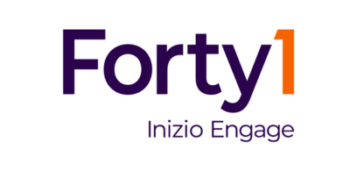Stop blaming managers for quiet quitting
As someone who has spent her entire career working with business leaders to help them create healthy workplace cultures, I’m fascinated by the trend known as “quiet quitting.” A similar behavior was labeled “employee disengagement” years ago by Gallup, the management consulting company. Today, the difference is that when employees sense they are leading lives of quiet desperation, they post about it on social media. Not so quiet after all.
For me, that’s OK. The TikToks and reels have opened the door to a deeper dialogue about what employers need to do to re-engage their workforce. It’s a great opportunity for some creative exploration of what the workplace could be. And yet, in so much of the business literature I’ve read recently, the blame for quiet quitting is placed on managers. That’s unfair.
At our employee engagement consultancy, we believe that managers are critical to the success of every organization. They are the bridge between senior leaders and employees. Managers are required to be business savvy and emotionally intelligent. Their span of duties involves an almost incredible range of human activity.
Managers must rally around senior leaders’ bold ambitions and translate them into action plans for employees. On a daily basis, managers spend their time hitting financial targets, ensuring quality, driving collaboration, innovating new products and services, and satisfying customers.
Most important, they are the stewards of the company’s culture. The employee experience is built on their regular interactions with the individuals on their teams. Managers have the power to motivate – or to dishearten.
Managers also have a duty of care to listen to employees – and to have the confidence to speak truth to power. When they do, they might redefine the employee value proposition so that it aligns with people’s expectations in our post-pandemic workplace. In fact, Gartner’s research shows that quiet quitting signals a broader trend toward a more human-centric employee value proposition, based on flexibility, shared purpose and a holistic approach to wellbeing.
Our four-step framework to support line managers has proven to be effective in driving sustainable change and improving workplace culture.
Four-Step Framework
- Clarity: Give clarity on expectations. Communicate the expectations that the business and teams have of line managers in the rapidly changing work environment.
- Content: Provide managers with content they need. Create timely content delivered to managers well in advance of all-employee announcements to support consistent, pertinent and relevant top-down communications
- Capability: Guide managers to existing training to improve their capabilities. Offer new learning experiences to increase manager’s range of communication skills.
- Community: Establish a community of communicators. Build a suite of digitally accessible, on-demand tools, include a psychologically safe space for raising concerns, commenting and sharing best practices.
Stop blaming; start empowering
For decades, research has shown that employees’ number one preferred source of information about the company is their immediate supervisor. Let’s make it easy for managers to be great communicators. Instead of blaming them for this latest wave of workplace malaise, let’s turn the tide of the great resignation by supporting managers with the right resources they need to do the vast amount of work we expect of them.
Next Article
 Luke-Matthew Iveson
Luke-Matthew Iveson
The three “As” of Affinity movements: how to be a year-round platform for DEI
While many organizations take pride in celebrating their business achievements, there’s a growing need to invest...
Read more Rani Khalon
Rani Khalon
Affinity Celebrations: How You Get Involved
How do we keep our people passionate about the causes we commemorate and ensure they make a positive difference? In the...
Read more Laura Hunt
Laura Hunt
Affinity Celebration Series: What you should know
Affinity celebrations often serve as a moment in time for us to come together, honour diverse histories and celebrate...
Read more